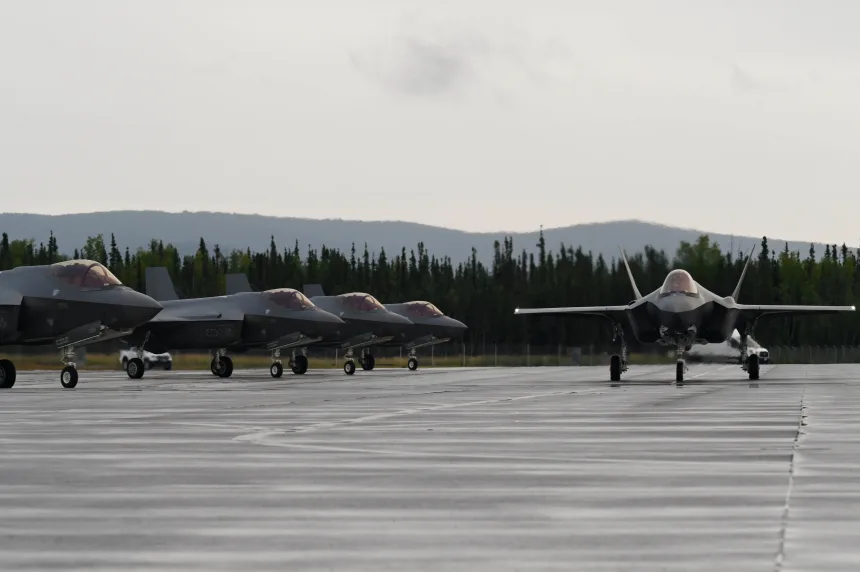An Air Force investigation has revealed how one of America’s most advanced fighter jets, the F-35A Lightning II, was lost in a dramatic crash at Eielson Air Force Base, Alaska earlier this year. The findings highlight how extreme weather and overlooked maintenance issues combined to bring down a $196.5 million aircraft.
The incident occurred on January 28, 2025, during a routine training flight. Shortly after takeoff, the jet’s nose landing gear jammed and refused to retract. Investigators found that hydraulic fluid contaminated with water had frozen in the sub-zero temperatures, locking the gear at an angle. This failure triggered a cascade of problems: the aircraft’s sensors mistakenly believed it was on the ground, switching the jet into “ground mode” mid-flight.
For nearly an hour, the pilot worked with Lockheed Martin engineers, air traffic control, and squadron commanders over a live call, trying everything from emergency checklists to touch-and-go landings to realign the gear. Despite every effort, the ice buildup left the F-35 uncontrollable. With no options left, the pilot safely ejected, suffering only minor injuries, as the jet plummeted and exploded on impact.
The report not only blamed the freezing conditions but also pointed to maintenance oversights in handling hydraulic fluid. Investigators said stronger safeguards are needed to ensure storage and contamination checks prevent water intrusion in the future.
The crash underscores the paradox of high-tech warfare: while the F-35 is equipped with stealth systems, advanced sensors, and AI-assisted controls, something as simple as frozen hydraulic fluid can cripple it. It also highlights the continued importance of human skill and calm under pressure, as the pilot’s composure prevented the tragedy from becoming a fatal one.
As the U.S. military reflects on the accident, the lesson is clear—technology alone cannot eliminate risk. Proper maintenance, rigorous safety checks, and respect for environmental extremes remain just as vital as cutting-edge innovation in keeping aircraft and pilots safe.


